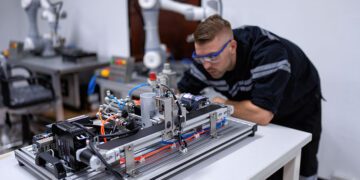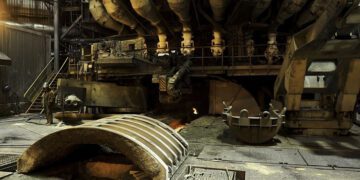The line between robots and Artificial Intelligence (AI) has always been somewhat blurry. While one deals with physical actions in the real world and the other with virtual, cognitive processes, there’s an undeniable symbiosis between the two. As we propel further into the 21st century, the convergence of robotics and intelligent systems is poised to create a world of possibilities previously only dreamt about.
“When metal meets mind, the resultant fusion is not just a machine but an intelligent entity capable of autonomous decisions and actions.”
1. The Synergy of Sensors and AI
It all begins with data. The latest robotic systems come equipped with an array of sophisticated sensors that capture a plethora of information. When this raw data meets the analytical prowess of AI algorithms, the robot becomes more than just a machine; it becomes an entity capable of understanding its environment and adapting accordingly.
2. Reinforcement Learning: Machines That Learn From Experience
Traditional robotics operated on a set of predefined rules. Today, thanks to advancements in reinforcement learning, robots can learn from their experiences. By continuously interacting with their surroundings and assessing the outcomes of their actions, robots refine their behaviors to achieve optimal results.
3. Natural Language Processing: Bridging the Communication Gap
One of the primary barriers between humans and robots has been communication. However, with AI-powered Natural Language Processing (NLP), robots can understand and even generate human-like speech, enabling seamless interactions and more integrated coexistence.
4. Predictive Maintenance: A Proactive Approach
AI isn’t just enhancing robot abilities; it’s also prolonging their lifespans. Through predictive maintenance, AI algorithms can detect potential malfunctions or wear and tear in robotic systems before they become critical, ensuring longevity and reducing operational downtimes.
5. Ethical Considerations in AI Robotics
With autonomy comes responsibility. As robots gain more independence, it’s essential to establish ethical guidelines to ensure their actions align with societal norms and values. This not only protects human interests but also fosters trust in these advanced systems.
6. Business Implications: A Paradigm Shift
The blend of AI and robotics is reshaping industries. From manufacturing and logistics to healthcare and entertainment, businesses must adapt to a world where intelligent robots play pivotal roles. Those that embrace this shift stand to gain significant competitive advantages, while those resistant risk obsolescence.
Conclusion
The melding of AI and robotics heralds a new era of technological advancement. These intelligent systems are more than the sum of their parts, promising a future where machines work alongside humans, enhancing our capabilities and shaping a world previously only imagined.




















